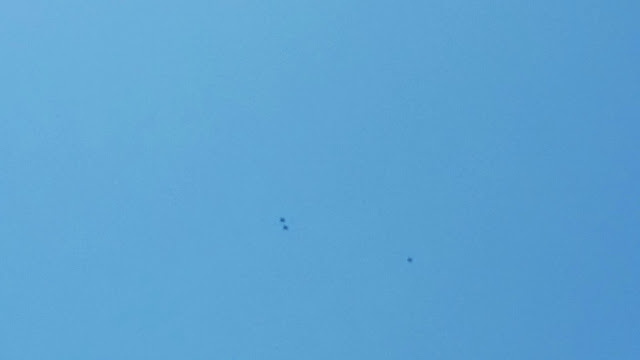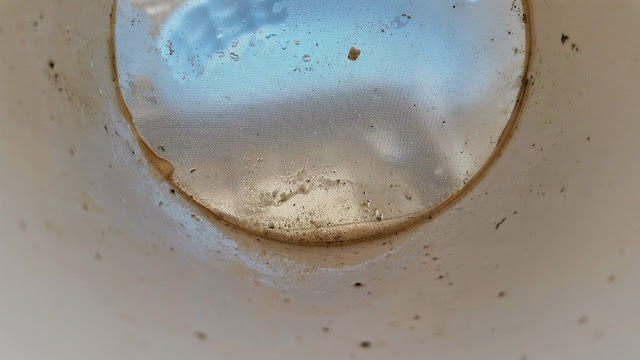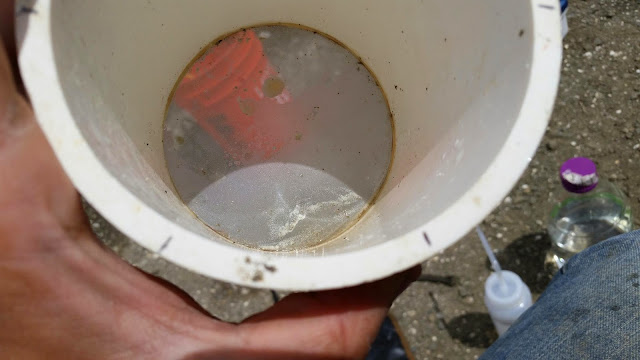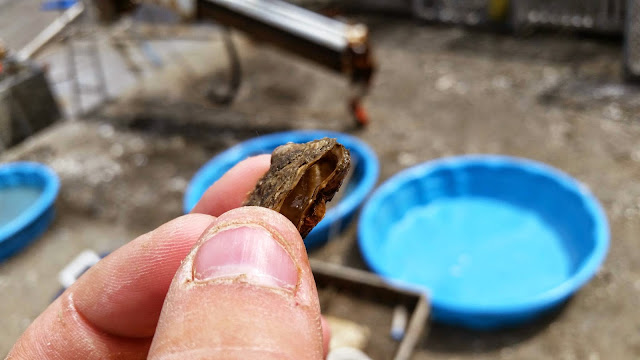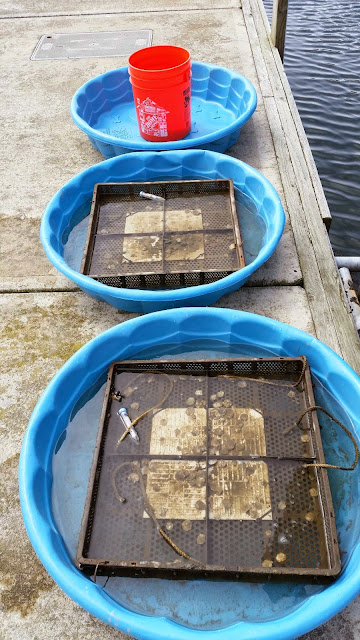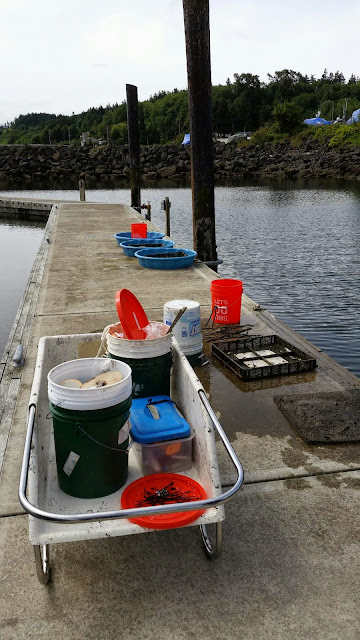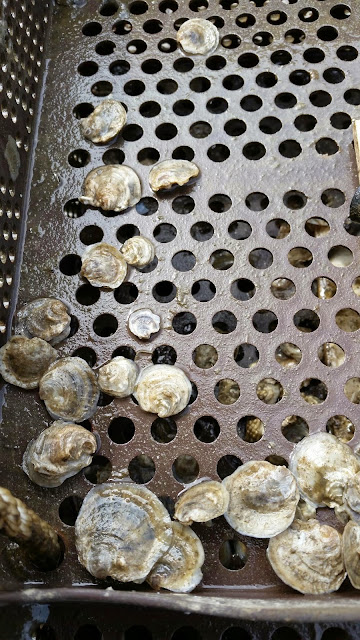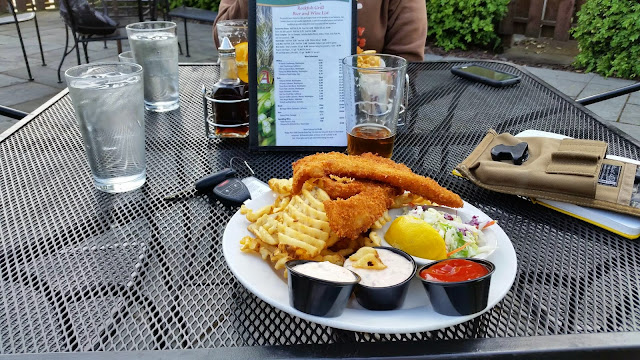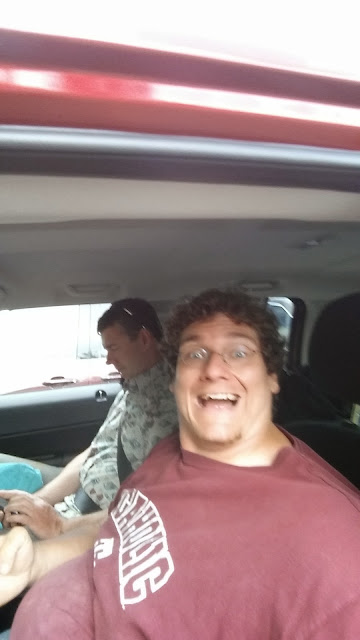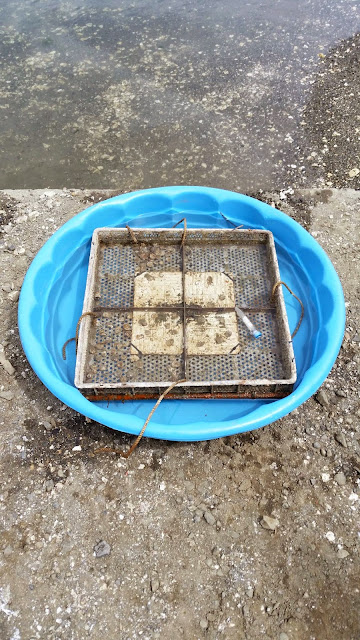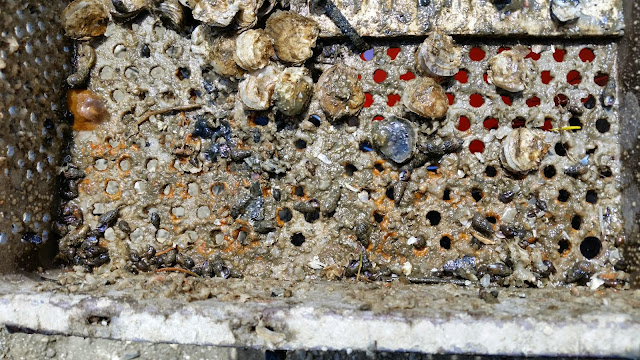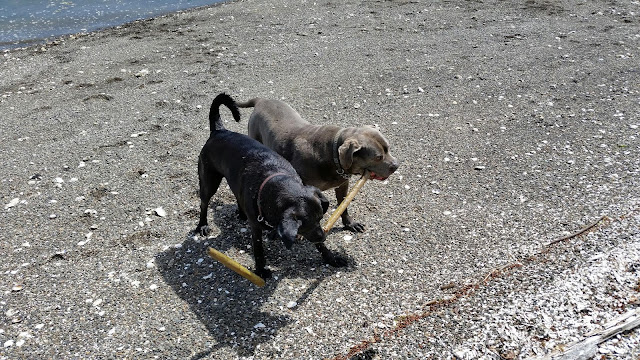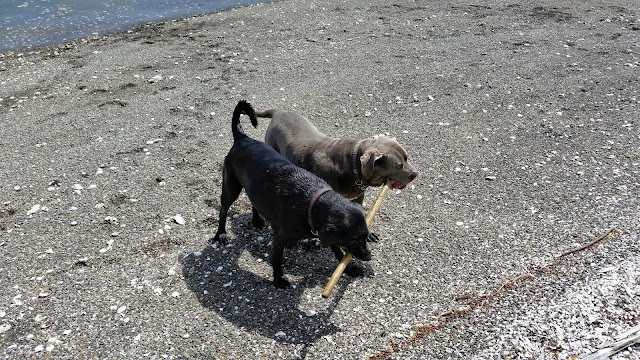SOP Anesthesia Procedure for Brood Check/Collection
1 stack consisting of 1 tray from each population is pulled out of the water where they are held for anesthesia. The stack will be different each week until all 4 stacks have been checked and then the process will repeat starting with the stack that was checked first.
Two of the trays are placed individual in roughly 10 gallons of ambient sea water in 2 twenty gallon pools.
The third tray remains outside side of the pool for approximately 45 minutes to deprive the oysters of oxygen.
Once the 45 minute mark is reached the tray is then placed in 10 gallons of a 50/50 seawater/85 g/L epsom salt freshwater mixture. These animals are then allowed 45 minutes to open up inside the treatment. Once open the animals are anesthetized by the epsom salts and remain gaping until flushed with sea water.
While the first tray is being treated the second tray is being dessicated. This repeats with the second tray treatment and the third tray dessication.
The animals are then visually inspected for signs of larvae including a grayish mass in the gills or on the lower deep cup of the shell. If anything suspect is seen, these animal is then flushed with seawater into a 52 um screen to capture any possible larvae. If larvae are present, they are washed off the screen into a 50 ml falcon with 75% Ethanol solution for preservation.
After all gaping animals are inspected, a quick count of all dead, gaping, and brooding animals is performed. Then the tray is placed in a pool of fresh ambient sea water to help the animals recover and avoid dessication until the process is completed for all trays being observed.
Once the final tray has been surveyed. The trays are then randomly organized back into a stack, secured to the hanging rope, and then returned back to their holding area.
Any brood collected will be brought back to the lab and have their solution switched out with 95% Ethanol.
